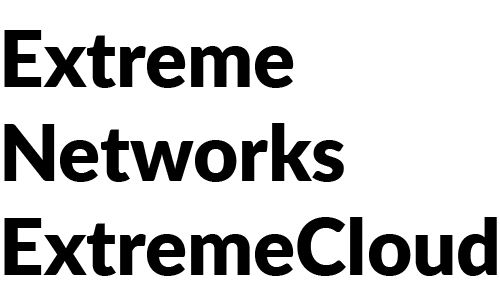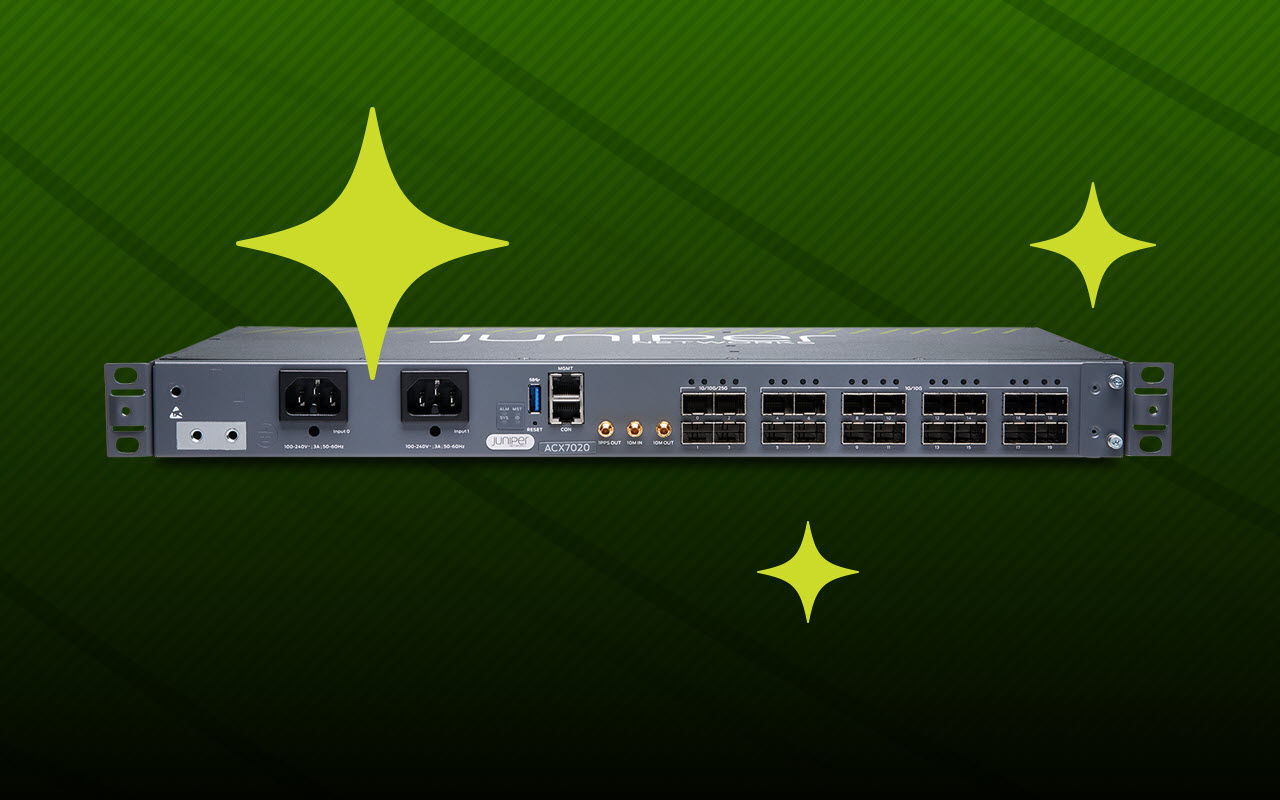Comparing Wired and Wireless Access Solutions
Wired and wireless solutions are NOT created equal.
Explore this solution guide to see how Juniper Mist AI stands above competitor solutions.

The IT industry is moving toward cloud-based architectures harnessing the power of AI to connect, secure, and automate network operations, as well as predict and resolve issues before they impact the network. Many solutions, however, are guilty of AI-washing and don’t drive real business results. Juniper Mist AI™, in contrast, brings real solutions, right now.
Find out how Mist AI’s features and capabilities stack up against solutions from Meraki, Aruba, Cisco and Extreme Networks. The comparisons may surprise you.

|

|

|

|

|
|
|---|---|---|---|---|---|
| Deployment Flexibility and Cloud Management | |||||
| Deployment Flexibility and Cloud Management | |||||
- Scale from the largest to the smallest enterprise businesses for rapid updates - Single click activation for streamline rollouts - Wired, Wi-Fi and WAN Assurance for full lifecycle management ZTP Configuration across AP, Switch and WAN gateway - Template Driven - Use Site variables to easily customize as needed |
Virtual controllers hosted in co-located data centers - are you going to monitor catalyst AP's or change the Catalyst AP persona to Meraki and lose many features, and very difficult to move back to DNA Center persona |
- Controller/Gateway for large customers, Aruba Central for small-midsize customers; monolithic architecture - No hierarchical configuration Offers on-premises and cloud solutions - Offered across different applications - Will offer on-prem Cloud option - very $$$$$ |
- On-premises with no cloud offering for SDA - Uses a centralized, proprietary controller - are you going to use Meraki to monitor your Catalyst AP's? Why did you buy expensive DNAC |
Microservices co-located data centers. - Controller/Gateway for large customers, monolithic architecture. - Offers on-premises and cloud solutions. - Offered across different applications. |
|
| Scalability | |||||
| Scalability | |||||
- Elastic vertical and horizontal scale - No expensive hardware required |
Complex and non-elastic - Virtual controllers (Containers) hosted in co-located data centers - Require separate servers to scale (Aruba Clearpass, etc) |
- Non-elastic with more gateways/controllers required - Push to Aruba Central |
- Non-elastic with more controllers required |
- Complex and non-elastic. - Virtual controllers hosted in co-located data centers. - Require separate servers and controllers to scale. - On-site controllers stacked. |
|
| End-to-End Visibility | |||||
| End-to-End Visibility | |||||
Client visibility across wired, wireless and NAC. Complete suite from on-boarding to sequence of events. Full visibility. |
Not available |
No end-to-end client event visibility and no sequence of events across wired, wireless and NAC. When troubleshooting client connectivity experience issues, customers need to look into debug Access Tracker on ClearPass for authentication failures and troubleshoot network separately in a different product (WLC, Central, Airwave, etc). |
No end-to-end client event visibility and no sequence of events across wired, wireless and NAC. When troubleshooting client connectivity experience issues, customers need to look into debug Live Logs on ISE for authentication failures and troubleshoot network separately in a different product (WLC, DNAC, etc). |
Limited end-to-end client connection experience visibility in case of using Extreme Management Center and Extreme Control. Not available inside the Extreme XIQ cloud, no visibility into granular client network connectivity experience like DHCP, ARP, DNS |
|
| AI-Driven RF Optimization (RRM) | |||||
| AI-Driven RF Optimization (RRM) | |||||
Based on reinforcement learning: - Optimizes channel/power with AI-based reinforcement learning - AI continuously maximizes User experience (SLE) and minimizes interference in real-time - Adapts dynamically on an ongoing basis while network under load learning from client experience - Learns and deprioritized triggered DFS channels to boost network uptime - Coverage SLE is an ongoing 'Site Survey' |
Basic RRM - will monitor DFS failure patterns - AP's remember their settings through power failures - Won't make changes in 'busy hours' |
ARM - Basic pattern recognition for comparing and optimizing low-level RF settings only across managed sites: - Not a true AI solution: doesn’t leverage reinforcement learning to improve over time - Doesn’t adjust RF to maximize user experience - Analyzes periodical and static data for daily but not ongoing dynamic updates - Requires Controller and Mobility Master for AirMatch RF optimization - Requires data collector appliances and NetInsight server |
15-year old algorithm - Based on how APs hear each other - Optimizes channel/power based solely on AP interference graph - RRM is performed on a static, periodic basis when the load is low |
Basic RRM. No AI/ML, requires several days of tuning. |
|
| Root Cause Identification | |||||
| Root Cause Identification | |||||
Automated event correlation using machine learning across wireless/wired/device domains. - Provide real actionable intelligence |
Root cause analysis (suggestions) based on event logs |
Basic RCA for a few wireless senario's and feature-deficient ArubaOS-CX based switches which have a small installed base - log based suggestions are very basic |
- Limited RCA - Requires DNA appliances $$$ |
Yes, can detect root cause. Fair with false positives some of them not correlate |
|
| Dynamic Packet Capture | |||||
| Dynamic Packet Capture | |||||
- Proactively captures packets when an error event occurs in real-time - Eliminates need to reproduce issues as every failure has a PCAP starting before the failure and playing though it - No more sending out tech folks with sniffers *after* the problem has happened |
Manual |
- Primarily manual - limited auto capture on authentication failure events - Requires an additional, separate cloud dashboard for troubleshooting and analysis (Cape Networks) - Requires overlay network of Aruba UXI wireless sensor hardware |
Intelligent Packet Capture - first a client needs to file a ticket - then the client will be tagged to collect data going forward - not at all automatic |
No. |
|
| Anomaly Detection | |||||
| Anomaly Detection | |||||
- Proactively identifies anomalies and uses data science tools to determine root cause - Leverages both Wired and Wireless SLEs for anomaly detection - 3rd generation algorithm with ARIMA boosts efficacy - Anomaly detection performed across Wi-Fi, LAN, WAN, Security Domains - ChatGPT integrated |
- 1st generation anomaly detection algorithm - Will go through a weeks worth of data to find some basic anomalies |
- Limited set of anomaly detection (DHCP, AAA, RF utilization) - Requires NetInsight Data Collector appliance |
- 1st generation anomaly detection algorithm - Limited anomalies detected (DHCP, AAA, Association, Throughput) - Requires Cisco DNA appliances (3+) |
Client 360 tracks basic anomalies. Pilot and CoPilot supported. 1st generation anomaly detection algorithm. Limited anomalies detected (Latency, Throughput, airtime). |
|
| Cloud Native NAC | |||||
| Cloud Native NAC | |||||
Juniper Mist Access Assurance provides automatic scaling, service geo-affinity for optimal latency and service redundancy. In addition, periodic hitless feature and security updates to Access Assurance happen automatically and do not require downtime. Customers need not worry about client scale, redundancy, geographic redundancy and affinity. |
Not available |
Customers need to design and deploy NAC infrastructure depending on the number of client devices, design and deploy NAC and network infrastructure for redundancy, geo affinity. Furthermore, any feature or security update requires downtime planning and manual execution for every server in the cluster. |
Customers need to design and deploy NAC infrastructure depending on the number of client devices, design and deploy NAC and network infrastructure for redundancy, geo affinity. Furthermore, any feature or security update requires downtime planning and manual execution for every server in the cluster. |
Customers need to design and deploy NAC infrastructure depending on the number of client devices, design and deploy NAC and network infrastructure for redundancy, geo affinity. Furthermore, any feature or security update requires downtime planning and manual execution for every server in the cluster. |
|
| Virtual Network Assistant | |||||
| Virtual Network Assistant | |||||
- Continuous learning through Supervised Machine Learning - Performs root cause analysis for most detected network issues - Supports wireless, wired and WAN at a site level - Troubleshoot issues instead of pulling logs - Can be accessed through WebUI or API - Built on 6 years of continuous learning and rich data science toolbox |
- Dashboard - No virtual assistant |
- Dashboard - No virtual assistant |
- Dashboard - Chatbot rumored but not productized or available to customers in beta |
- Dashboard and network assistant only on cloud. - Chatbot called Co-Pilot, very limited, No AI. Allows NLP version 1.0. No query. - In beta the last 2 years. |






















